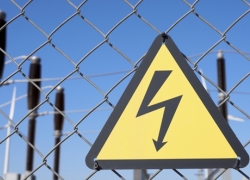Mix and match PDUs to increase energy efficiency
Mix and match PDUs to increase energy efficiency

Data centers are kind of like modern-day libraries that collectively house near-immeasurable quantities of information. Much of the data stored in these massive facilities must be accessible at all times, which means that servers must continually stay up and running. Factor in climate monitoring and the necessity for cooling equipment and humidity control technology, and one thing becomes very apparent: Data centers consume a lot of energy.
In fact, the Natural Resources Defense Council stated that in 2013 alone, U.S. data centers cumulatively accounted for approximately 91 billion kilowatt-hours of electricity. More importantly, this energy consumption is projected to continue on an upward trajectory. By 2020, data centers will likely be responsible for around 140 billion kilowatt hours. For the sake of keeping future energy costs down and for the general cause of conservation, data center management must start looking for new opportunities to maximize energy efficiency.
It all starts with power distribution units
Power monitoring is one of the most important elements of effective data center infrastructure management. Nearly every essential piece of equipment operating within a data center consumes electricity in some capacity. Monitoring systems, cooling components, servers, information dashboards and lighting are all eating energy, and many of these components rely on power strips; it is up to data center management to make sure that the are using the right ones.
Unlike the basic power strips found in most office environments are in the crevices of a home entertainment system, data center PDUs must be carefully selected depending on the type of equipment that will be plugged into them. Minimalist power strips might be useful for non-essential equipment that may not require perpetual monitoring. However, as the equipment is scaled up to include racks and cabinets, more power protection and monitoring feature may be needed to prevent outages and distribute energy efficiently. This is where customization becomes useful.
Selecting the right PDUs
There is no single, one-size-fits all solution for data center power distribution. A smaller facility, for example, that lacks building-wide surge suppression may require surge protection power strips. These are clutch in the event of spontaneous voltage spikes, which are by no means anomalous in a data center environment - nor the standard American household for that matter.
The only difference is that in the home, these voltage spikes are merely inconvenient. In the data center, they pose the threat of outages that can result in significant downtime, lost data and upset customers.
For larger data center equipment, outlet level power monitoring is a necessity. The ability to manage power distribution is especially important for more elaborate systems that consume more energy. Power strips that offer remote and local monitoring displays can provide data center managers with extraordinarily accurate readings of energy consumption and distribution. Likewise, it is important to have access to climate metrics such as temperature, humidity and dew point, all of which are contained within comprehensive power monitoring solutions. Climate monitoring is just as important as power monitoring, as any company that has had a data center flooded or go up in flames knows.
Customizable power strips
The closest thing that exists to a one-size-fits all PDU is a customizable power strip that can be upgraded as needed. Geist Upgradeable power strips, for example, can be configured for local and remote power monitoring. Data center managers can tinker with the unit to make it as simple, or as elaborate as their data center infrastructure needs it to be.
Be sure to visit Geist's website for more resources about the capabilities of its PDUs, and to discover more opportunities for customization offered by Geist Upgradeable power strips.



